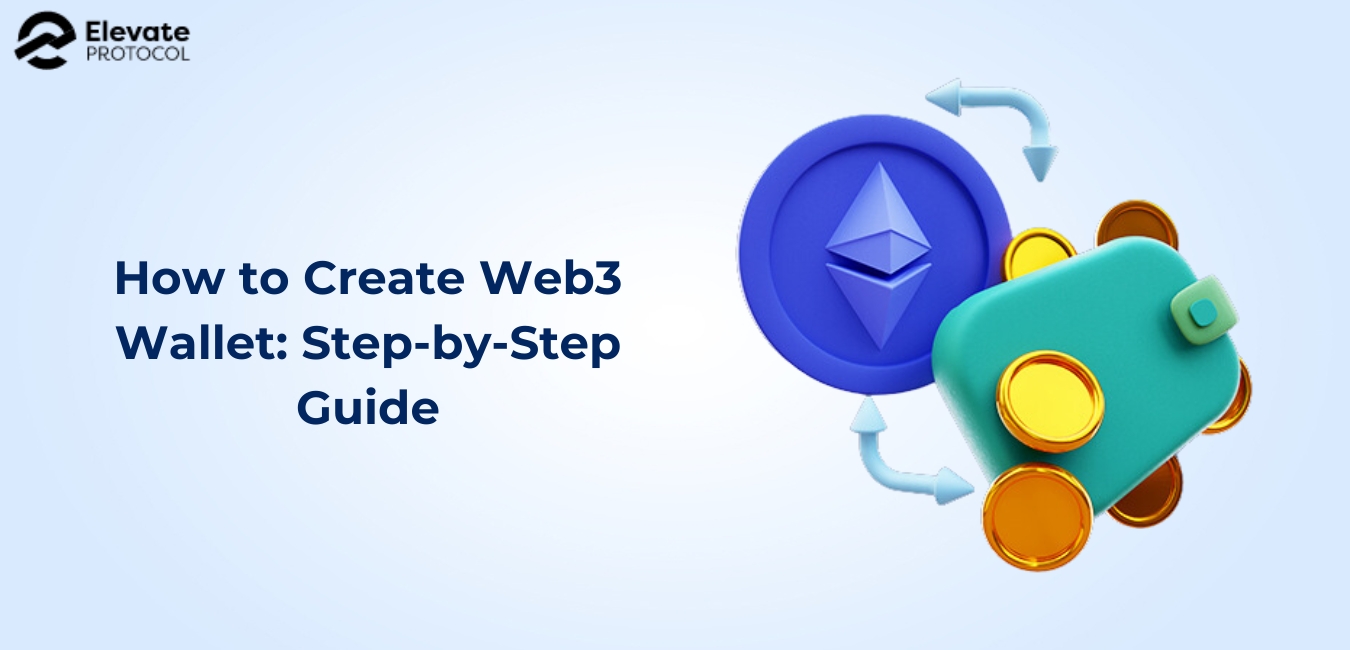
In the rapidly evolving landscape of blockchain technology, Web3 wallets have emerged as a crucial component, enabling users to interact seamlessly with decentralized applications (DApps) and manage their digital assets securely.
Elevate Protocol is at the forefront of innovation, revolutionizing asset management by seamlessly integrating web3 technology to enhance the efficiency and security of blockchain assets.
This step-by-step guide will walk you through the process of creating a Web3 wallet, ensuring you can navigate the decentralized world with confidence.
Web3 Wallets
Before we delve into the steps, let’s briefly understand what Web3 wallets are and why they are essential in the decentralized space. Web3 wallets are digital wallets that allow users to manage their cryptocurrencies and interact with decentralized applications on the blockchain.
Unlike traditional wallets, Web3 wallets are non-custodial, meaning users have full control over their private keys and funds. Key benefits of Web3 wallets include enhanced security, privacy, and the ability to seamlessly connect with various decentralized platforms.
One of the significant advantages is the elimination of intermediaries, as users can directly engage with smart contracts and decentralized protocols.
Step 1: Choose the Right Web3 Wallet
The first crucial step in creating a Web3 wallet is choosing the right wallet for your needs. Several popular Web3 wallet options are available, each with its unique features and supported platforms.
Some well-known choices include MetaMask, Trust Wallet, MyEtherWallet, and Coinbase Wallet. Consider factors such as user interface, compatibility with your preferred blockchain networks, and additional features when selecting a wallet.
For this guide, we will use MetaMask, a widely used Web3 wallet compatible with Ethereum and various other blockchain networks.
Step 2: Download and Install the Web3 Wallet
Once you’ve selected a Web3 wallet, proceed to download and install it on your preferred device. Most Web3 wallets are available as browser extensions or mobile applications. For MetaMask, visit the official website or your app store and follow the instructions to install the wallet.
Ensure that you only download wallets from official sources to avoid potential security risks. After installation, open the wallet and begin the setup process.
Step 3: Create a New Wallet
Upon launching MetaMask or your chosen Web3 wallet, you will be prompted to either create a new wallet or import an existing one. For this guide, we’ll focus on creating a new wallet.
Click on the “Create a Wallet” or similar option, and the wallet will guide you through the process of generating a new wallet address and securing your private key.
Follow the on-screen instructions carefully, and be sure to write down your recovery seed phrase, as this will be crucial for recovering your wallet if needed.
Step 4: Set a Strong Password
Security is paramount when dealing with cryptocurrencies and decentralized applications. During the wallet creation process, you will be asked to set a password for your Web3 wallet.
Ensure that your password is strong, combining upper and lower case letters, numbers, and symbols to enhance its resilience against potential threats.
Step 5: Fund Your Web3 Wallet
With your Web3 wallet created and secured, the next step is to fund it with cryptocurrencies. Most Web3 wallets support a variety of cryptocurrencies, with Ethereum being a common choice for decentralized applications.
If you don’t have any cryptocurrency yet, you can purchase some through a cryptocurrency exchange and transfer it to your newly created wallet.
Step 6: Connect Your Web3 Wallet to DApps
Now that your Web3 wallet is funded, you can start interacting with decentralized applications. Many DApps and blockchain-based platforms require users to connect their wallets to access various features.
Locate the wallet connection option within the DApp interface and select your Web3 wallet. Confirm the connection, and you’re ready to explore the decentralized world.
Step 7: Explore Additional Features
Web3 wallets often come with additional features that enhance the user experience. These may include token management, decentralized exchange (DEX) integration, and staking capabilities.
Take the time to explore these features within your chosen wallet to make the most of your decentralized journey.
Step 8: Secure Your Web3 Wallet
Security is an ongoing concern in the cryptocurrency space. To ensure the safety of your digital assets, regularly update your Web3 wallet software and be cautious of phishing attempts. Avoid clicking on suspicious links and only use your Web3 wallet on trusted websites.
Consider enabling additional security features, such as two-factor authentication (2FA) if supported by your wallet. Periodically review your wallet’s security settings to stay informed about the latest developments in securing your digital assets.
Conclusion
Creating a Web3 wallet is a fundamental step for anyone looking to engage with the decentralized ecosystem. By following this step-by-step guide, you’ve learned how to choose the right wallet, set it up securely, fund it with cryptocurrencies, and connect it to decentralized applications.
As the blockchain space continues to evolve, staying informed and adapting to new developments is crucial. Regularly check for updates from your wallet provider and explore additional features to make the most of your decentralized experience.
Read More: How Many Web3 Wallets are there?